One of our first requests when we start working with a client is to get their logo as vector art along with their Pantone colors. We hear the question ‘What is vector?’ pretty quickly. We sometimes hear ‘What are Pantone colors?’ as well. But we will get to that later. Below, we’ve tried to summarize some information we hope will be helpful in regards to better understanding vector artwork.
What is vector art? According to Adobe, vector art is comprised of “points, lines, curves, and shapes that are based on mathematical formulas.” The team at Shutterstock notes that because of its “algorithmic makeup, vectors are infinitely scalable, and remain smooth and crisp even when sized up to massive dimensions.”
That’s a lot of information, most of which doesn’t make much sense to you, or us for that matter. What vector art is can be pretty complex, what it allows us to do is to ensure crisp and clear imprints on items regardless of imprint size.
Corel describes vector art as “clean with crisp lines and ready to print on banners, t-shirts, flyers, and more. It can be enlarged or reduced with no quality loss.”
The most common file types for vector art include according to Shutterstock are:
- .ai (Adobe Illustrator document)
- .eps (Encapsulated PostScript)
- .svg (Scalable Vector Graphic)
- .pdf (Portable Document Format; only when saved from vector programs)
The opposite of vector art is raster art.
Raster-based images are created with small blocks of color called pixels.
These images tend to be “blurry and low resolution, suitable only for screen or web viewing. It would not print well, and the quality will only get worse if enlarged,” according to the design team at Corel.
Shutterstock identifies the following file types for raster art.
- .tiff (Tagged Image File Format)
- .psd (Adobe Photoshop Document)
- .pdf (Portable Document Format)
- .jpg (Joint Photographics Expert Group)
- .png (Portable Network Graphic)
- .gif (Graphics Interchange Format)
- .bmp (Bitmap Image File)
You may be surprised to learn that fonts are nothing more than a collection of art files called glyphs. There are multiple ways to create the glyphs that are used to create font collections. According to Microsoft, these are the four primary ways to create and display fonts:
- In raster fonts, a glyph is a bitmap that the system uses to draw a single character or symbol in the font.
- In vector fonts, a glyph is a collection of line endpoints that define the line segments that the system uses to draw a character or symbol in the font.
- In TrueType and OpenType fonts, a glyph is a collection of line and curve commands as well as a collection of hints.
A common question we get is ‘Can I send my artwork as a PDF file?’. The answer is, it depends. PDF is an acronym for Portable Document Format. In essence, a PDF is a “container” for the images and fonts put into it. If the artwork put into a PDF is high quality, then it can be used in most cases. However, if the artwork put into the PDF is not of good quality, the PDF will not be able to be used.
Vector fonts and graphics are the clear winner when preparing a file for embroidery or printing on clothing or other promotional items.
Can raster art be digitized for embroidery or used for printing on clothing or promotional products?
Maybe.
The answer depends on the quality of the raster file and the application (embroidery, screen printing, etc.). Reach out to us with your file and we can evaluate it.
Can raster art be converted to vector art?
Yes! There are a variety of tools that can convert raster art to vector art.
Our graphics team can help you with the conversion for a nominal fee.
In summary, vector art will produce the cleanest lines and best-looking artwork for your promotional products and branded clothing. If you don’t have vector art, we have many very affordable services to help you create it. We are here to help and will make the process as simple as we can! Now, onto Pantone colors….in the next blog! Have a great day!


